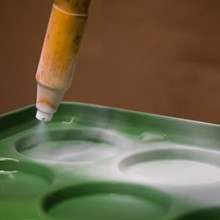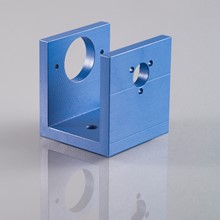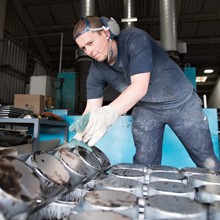We have a long-standing customer working in the food industry, that manufacturers machines for processing fondant and sweet fillings.
The products we supply have not changed in many years. The customer’s machinery specifications had stayed the same too. We’d never had any issues before - everything has been working well for a long time.
WHAT WAS THE PROBLEM?
Recently, however, equipment was supplied into a factory overseas and quickly developed problems. The equipment was failing and on inspection, the components we supplied in a specific FDA grade of filled PTFE were showing signs of wear after only a few weeks. The typical timeframe for this kind of wear is many months.
The PTFE material we supplied was immediately blamed and deemed ‘faulty’ as after all what could it be when the process was well-proven?
HOW WE APPROACHED THE ISSUE
We launched an internal investigation as soon as we were aware of the issue. We traced the batch of material the components came from and checked all of the material testing which takes place during our manufacture. Nothing obvious was wrong.
We then had the failed components shipped back for analysis in our lab and again, the results showed the physical properties of the material exceeded the requirements of our specification.
Whilst good news for us, this was a bit of a problem for our customer as the root cause of the failure was unknown now that bad material had been ruled out.
Further investigation by our customer revealed the density, sugar content and process temperature of the media was in fact all very different from historical processing. Now we were getting somewhere.
However, the customer’s equipment was certified and no change in any of the materials which came into contact with the food was permitted. Basically, the material wasn’t working, but we weren’t allowed to change it.
OUR SOLUTION
What we did know from our experience in moulding PTFE materials is that we can alter some of the physical properties of the materials by changing the process conditions when moulding.
So we went ahead and moulded a series of test samples, way outside the normal parameters we strictly adhere to. Lab testing of the materials followed and we found what we thought was a solution. Well on paper at least.
The next step was to make actual components for test on-site which we were able to do quickly. The results? Well, the problem was gone. Furthermore, the component life is extended beyond normal expectations.
We are now currently working on the same approach on all parts for this customer with a view to extending the lifecycle of his parts across the board and thus saving him money.
If you’re having an issue in your food and beverage business that you need help with, please get in touch.





